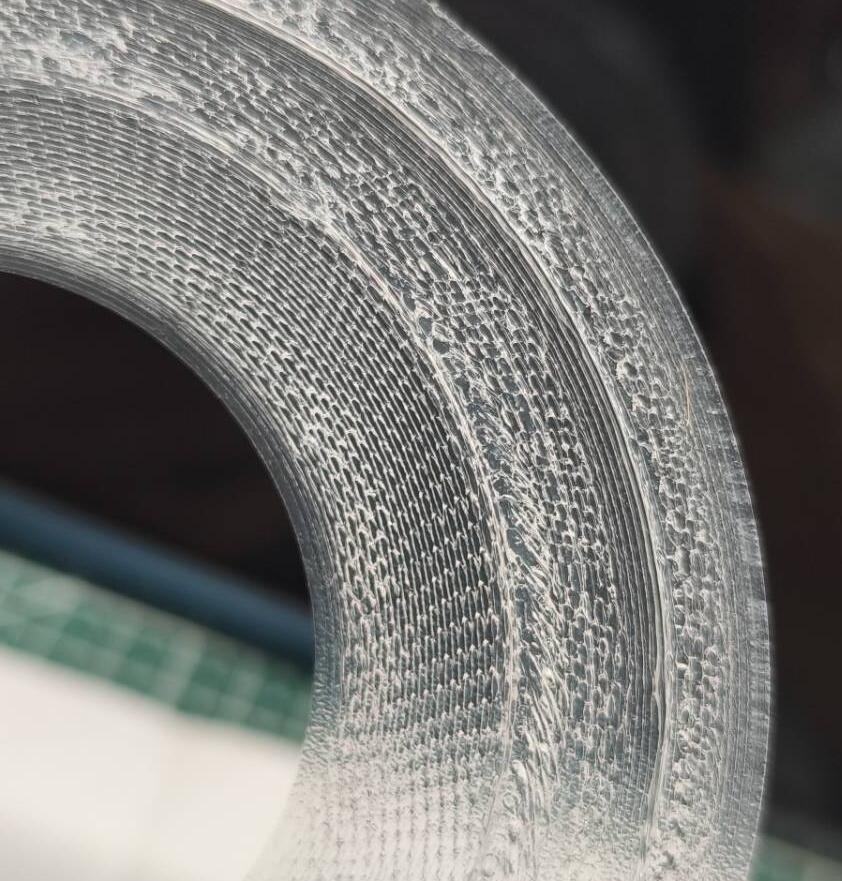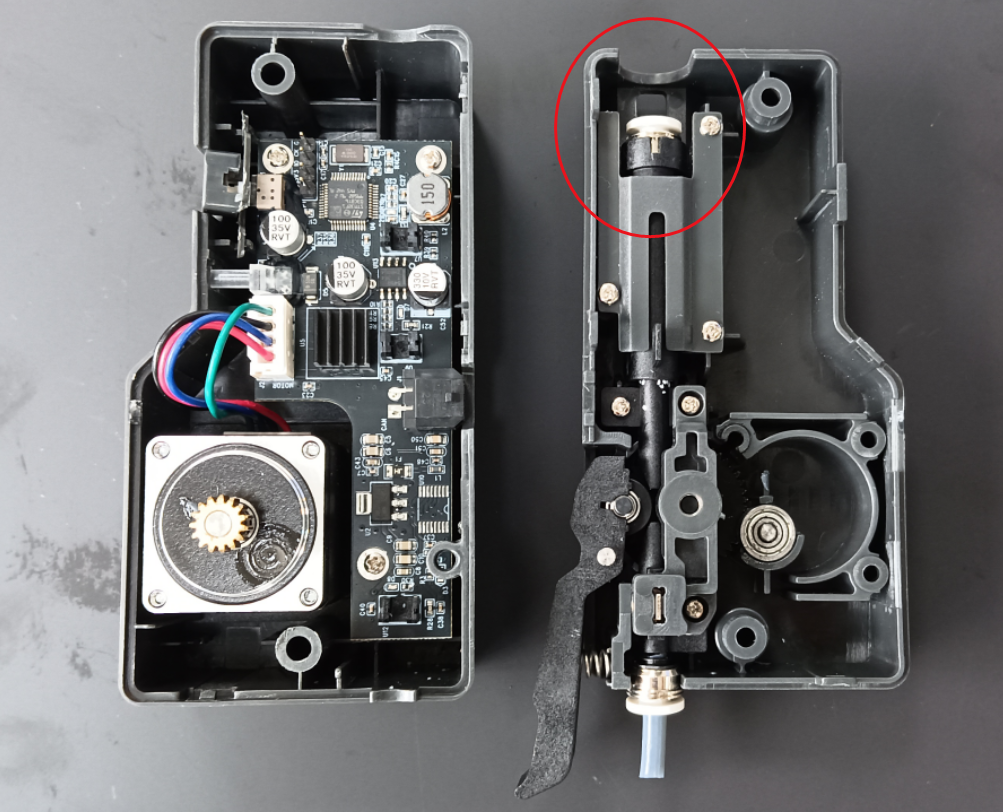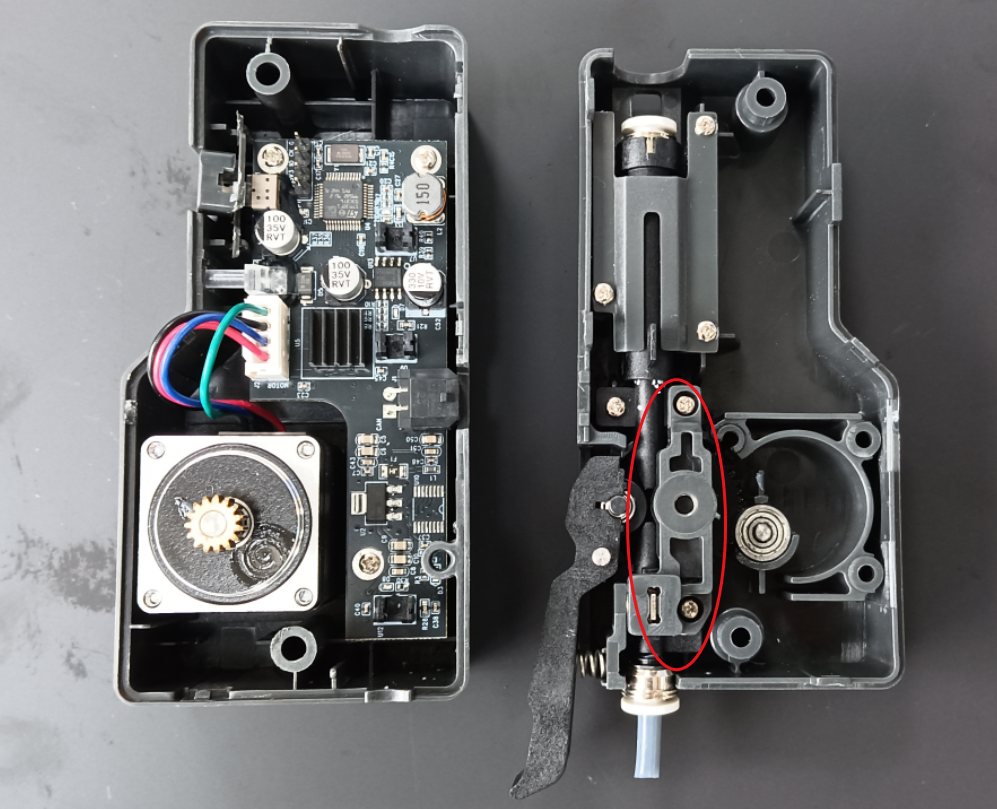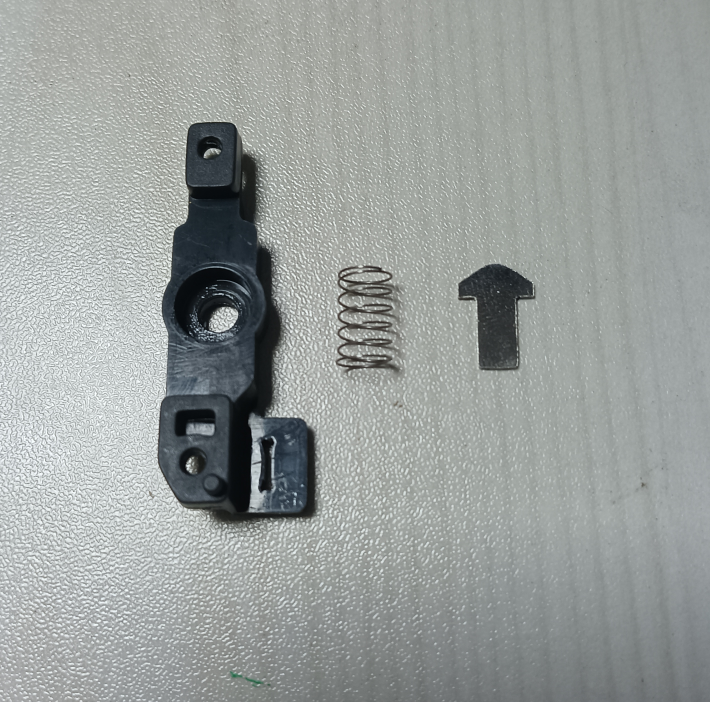Auxiliary feeder usage tutorial and troubleshooting
SV08 max uses an auxiliary feeder, which drives the gears through an independent motor and actively pushes the filament to the extruder, making it easier to install and unload the filament. It can also detect filament breakage, blockage, and entanglement, avoiding wasting more filament during printing.
Before using the auxiliary feeder, please confirm that the printer's firmware is updated to the latest version.
¶ How to use the auxiliary feeder
Installation of the filament: Cut the filament at a 45° inclined angle for easy installation of the filament.

Press the handle of the auxiliary feeder, load the filament, and check the indicator light of the auxiliary feeder to make sure the broken material detection has sensed the filament
 |
 |
Confirm that the filament has successfully entered the Teflon tube, click the switch of the auxiliary feeder, and the filament is delivered to the extruder head to complete the installation of the filament.

Unload the filament: Click the long unloading button, the nozzle will automatically unload the filament after heating is completed, and wait for the filament to exit before pulling out the filament.

¶ Light indication:
1. No light:
No filament loaded.
2. Green light:
Filament loaded, filament transported normally for printing.
3. Blue light - filament entangled:
(1) The photoelectric switch is not activated, the spring does not rebound upward, and the discharge tube is stuck.
(2) The feed handle spring is loose, causing the filament to fail to feed properly.
(3) The Teflon tube has detached from the pneumatic connector, which preventing the filament from being properly fed into the extrusion head.
(4) The filament is entangled and cannot be printed normally.
(5) The filament is used up and needs to be replaced with a new filament (it takes 5-8 minutes to trigger this situation).
4.Red light - nozzle blockage, etc.:
(1) Nozzle blocked/thermal creep occurs/filament diameter issues prevent proper melting and extrusion.
(2) The extruder handle is loose, causing uneven gear marks on the filament.
(3) The discharge tube is stuck and the photoelectric switch cannot be triggered downward.
¶ Internal structure picture:

¶ Troubleshooting:
An error occurs, as shown below:

Please check the wiring of the auxiliary feeder, if the cable is detached or damaged, it will be prompted to report an error, you need to confirm that the cable is successfully connected to restart the printer.
¶ Blue light
(1) Check the discharge pipe and spring, move the discharge pipe up and down, and confirm that the spring and discharge pipe are not stuck.

(2) Squeeze the handle of the auxiliary feeder to confirm that the handle spring of the auxiliary feeder is not detached and the filament is feeding properly.

(3) Please check the Teflon tube and pneumatic connector. If they are loose, please connect them in time.
 |
 |
(4) Check the filament and make sure it is not tangled or knotted. After the printer completes the long unwinding process, store the filament in time to avoid entanglement. If the same roll of filament is entangled multiple times, try to replace it with another filament and print again.


(5) After using the filament, please replace it. Please refer to the video tutorial on replacing the filament:

¶ Red light
- (1) Check the model being printed. If the model's internal filler or walls are very porous and have holes, this means the filament is not moving in the auxiliary feeder, Teflon tube, or throat tube, causing the red light to appear.


① Check the nozzle and throat. Heat the nozzle to 240℃, remove the Teflon tube, and open the extruder handle. If the filament cannot pass through after insertion, it means that the nozzle is clogged or thermally broken. Please refer to the cleaning tutorial video: https://youtu.be/zIimdq_HCjE?si=kNH4Xb7tfztmDwSe
② Check the slicing parameters and filament material. If the extruded filament has a tip expansion or uneven extrusion marks, it is usually due to thermal creep. Please check the current slicing temperature and select the appropriate printing temperature to avoid overheating and thermal blockage.

③ Try changing different types of filaments for testing and confirm that the wire diameter of the filament remains within the range of ±1.75mm. Reduce the printing speed of the model by 20% for testing. It is recommended to use high-speed filament for printing.
- (2) Check the tool head handle and the auxiliary feeder handle to confirm that the auxiliary feeder handle spring is not lost.
① Adjust the hand nut screw to obtain the appropriate spring tension and ensure that the filament can be extruded normally.

② Remove the Teflon tube from the joint and pull the filament. If there is obvious resistance, clean the dust or filament debris in the joint and Teflon tube, and check the fixing direction of the Teflon tube to avoid entanglement or bending that causes greater resistance.
- (3) Check the discharge tube and spring, move the discharge tube up and down, and confirm that the spring or pipe mechanism is not blocked and the discharge tube can move downward normally.

¶ Internal troubleshooting
1. Check the Bowden Tube Connector. Ensure the connector is securely fastened to the Teflon tube. If it is loose, the filament will not feed into the tool head synchronously, causing the auxiliary feeder to display an error and pause printing.

2. Check the arrow-shaped metal. This triggers the auxiliary feeder's photoelectric switch. When the photoelectric switch is triggered, the auxiliary feeder will detect that the filament has entered. If the photoelectric switch is not triggered, the auxiliary feeder will mistakenly determine that no filament is loaded.Make sure the arrow metal is smooth. If there are any rough spots, please report them to us.
 |
 |
3. Check the pneumatic connector to ensure there is no filament dust inside the pneumatic connector and Teflon tube. Filament dust originates from the metal sheet. Burrs on the metal sheet can cause filament wear. Clean the filament dust and polish the metal sheet until smooth. If this does not work, please contact SOVOL.